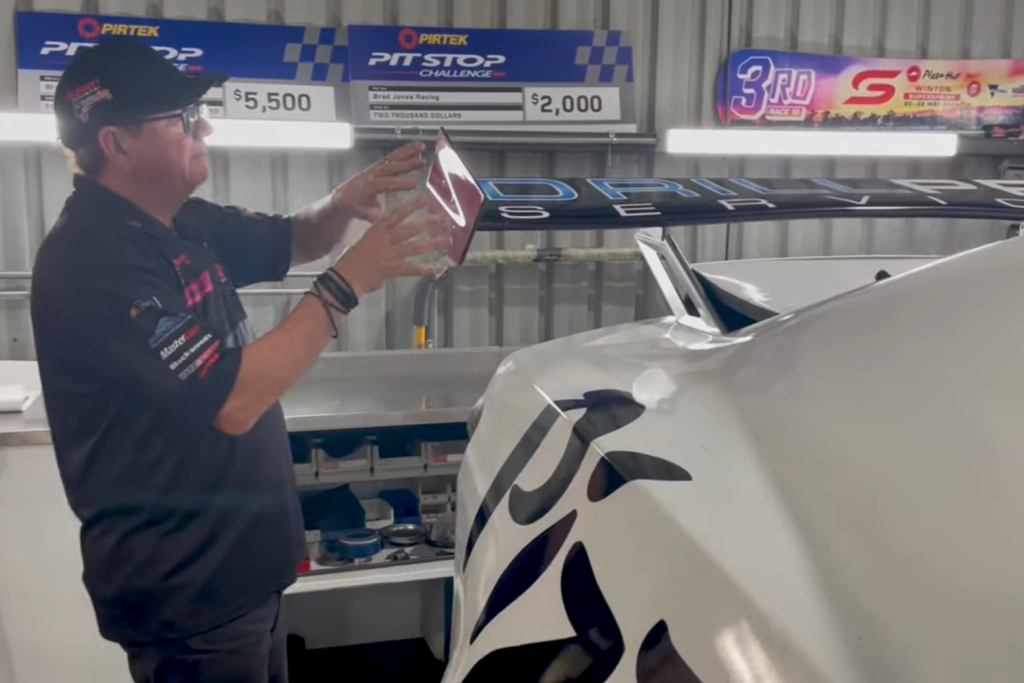
That is the comment from Brad Jones in his latest Gen3 tech video, summarising the changes to both the Chevrolet Camaro – of which his eponymous team fields four – and the Ford Mustang.
Jones expressed optimism that aerodynamic parity has now been achieved thanks to two rounds of wind tunnel testing, in the case of the Mustang, at the Windshear facility in the United States.
However, the extra downforce will make the Gen3 Supercars less ‘slippery’ in a straight line.
“All these things have been developed at Windshear, the wind tunnel that they sent the cars to at Charlotte to get the balance right between the two cars,” explained Jones.
“From the testing we’ve done, it looks like the cars are very similar, so it’ll be really cool to get to Bathurst and not be talking about parity at all.
“The car will have around 20 percent more downforce than the Mustang had at the last event in Adelaide, and how we’ve got to that is we just needed to get the cars balanced up and the aero running right.
“So, when they were at Windshear, they decided we needed all these things and this is how we end up with exactly the same sort of aero on the Mustang and the Camaro. So, fingers crossed it’s going to be all good.
“It’ll be a little slower in a straight line because you don’t get anything for nothing so, with more drag and more downforce, we’re expecting these cars to be something like 10km/h slower down the straight at Bathurst.
“But, hopefully it’s a better balanced package and there’s nothing to talk about.”
Shane van Gisbergen reached 300.5km/h during practice at last year’s Bathurst 1000, suggesting the new top speed at Mount Panorama will be around 290km/h.
Jones’ reference to the Mustang’s spec at Adelaide hints at claims that the Ford fighter generated significantly more rear downforce than the Camaro thanks to its second in-season aero update of 2023, which came online at the Gold Coast 500.
Notably, both the new Camaro and Mustang packages were developed with one of the aims being to address a pitch behaviour issue, whereby the rear of the car would become unstable under brakes due to a stalling effect.
That is said to have been achieved by changes to splitter profiles and tapered skid plates on both cars.
According to Supercars General Manager of Motorsport, Tim Edwards, the new packages generate slightly more front downforce and hence the rear downforce figures was raised as well in order to maintain balance.
“The front changes led to the downforce number creeping up slightly,” he told the championship’s official website.
“It’s nowhere near the levels of Car of the Future, but slightly more than last year.
“The drivers may feel they have more grip because they’ve got more downforce, but it’ll be more consistent.
“Every time they put their foot on the brake pedal, it won’t shift the aero balance as much as last year.
“To keep the same balance between front and rear, which is critical, we had to increase rear downforce slightly to keep the same percentage balance front to rear.”
Meanwhile, demonstrations have been held at this weekend’s Repco Bathurst 12 Hour in order to collect more engine data.



















Discussion about this post